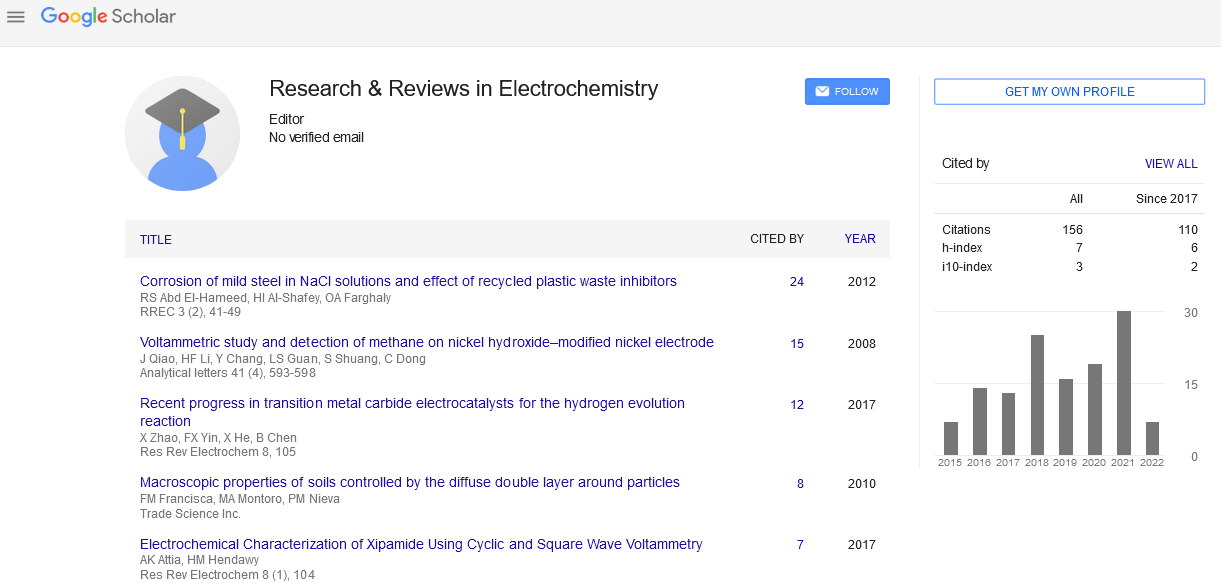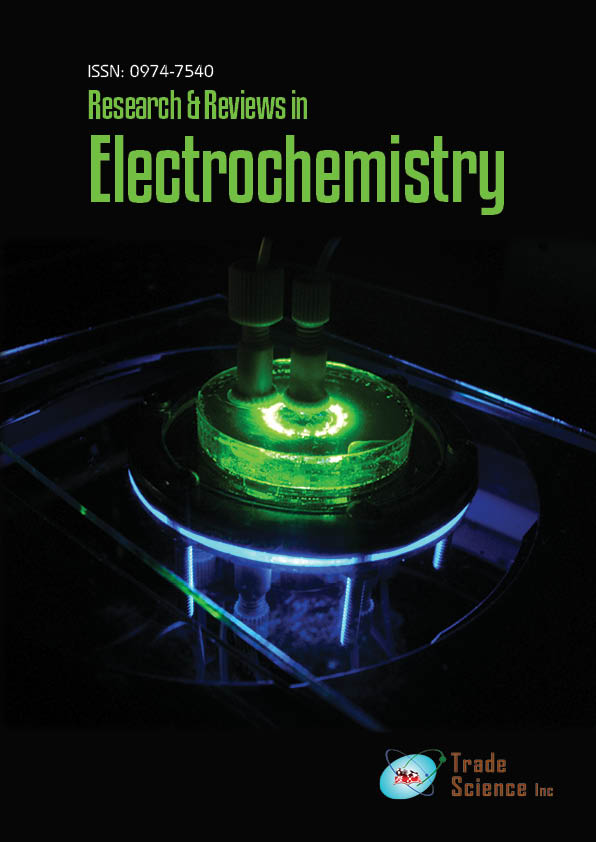Short commentary
, Volume: 12( 3) DOI: 10.37532/0974-7540.22.12.3.243Doxorubicin Binding to Ion-Exchange Resin in Blood Filtration Devices: A Multi-Physics Modeling Study
- *Correspondence:
- Amber Williams, Editorial Office, Research and Reviews in Electrochemistry, UK; E-mail: electro.med@scholarres.org
Citation: William A. Doxorubicin Binding to Ion-Exchange Resin in Blood Filtration Devices: A Multi-Physics Modeling Study. Res Rev Electrochem. 2022;12(3):243.
Abstract
Intra-Arterial Chemotherapy (IAC) drugs have intrinsic ionic properties that can be used to filter excess drugs from blood in order to reduce systemic toxicity. The ion-exchange mechanism is used in an endovascular chemo filter device that can be used during IAC to capture ionic drugs after they have had their effect on the tumour. By introducing an effective diffusion coefficient into the advection-diffusion-reaction equation, the concentrated solution theory is used in this study to account for the effect of electrochemical forces on drug transport and adsorption. As a result, a multi-physics model coupling hemodynamic and electrochemical forces is created and applied to simulations of Doxorubicine transport and binding in the chemo filter device. A comparison of drug adsorption predicted by the computations to that measured in animal studies demonstrated the advantages of using the concentrated solution theory for modeling drug binding over the Nernst-Plank relations.
Introduction
One of the most important aspects in the design of endovascular devices for drug filtration or elution is drug transport. Drugs interact with blood and medical devices via various mechanochemical processes that vary depending on their properties. Because many chemotherapeutic drugs have intrinsic ionic properties, ion-exchange mechanisms can be used to improve their effectiveness by reducing adverse side effects. Doxorubicin (Dox) is a chemotherapeutic drug that is commonly used in Intra-Arterial Chemotherapy (IAC) for the treatment of solid tumour, such as primary liver cancer. A cocktail of chemotherapeutic drugs, including Dox, is injected into the arterial blood flow that feeds the tumour during the IAC procedure. Despite the fact that the IAC provides targeted delivery, less than half of the drug absorbs to the tumour, while the remainder remains in the circulation, causing side effects such as irreversible heart failure. Because Dox is positively charged, it can be filtered from blood by binding to an ionic resin via an ion-exchange mechanism, reducing systemic toxicity caused by the IAC. A catheter-based chemo filter device was proposed for removing Dox from the venous flow after it had acted on the tumor's malignant cells. Adsorbing the drug to its surface coated with ionic resin, the chemo filter deployed during the IAC procedure in veins draining the tumour would allow for safer and more efficient treatment.
Significant advancements in computational methods have aided in the development of mathematical models that explain the underlying mechanisms of convection, diffusion, and reaction. As part of the chemo filter design project, the motivation for this study was to develop a multi-physics modeling approach to analyse transport phenomena in concentrated and dilute electrochemical solutions. We present a novel method for numerically modeling drug transport and binding in an electrochemical system, as well as its application to Dox transport and binding to the chemo filter device. Comparisons to measurements from animal studies back up the modeling results.
A computational model that captures the transport of Dox in the flow and its binding to the device's ionic surface must combine hemodynamic and electrochemical forces. The mathematical relationships for electrochemical interaction of ionic particles with an ion-exchange surface resulting in drug flux towards the surface are developed in this study. Unlike in the Navier-Stokes and advection-diffusion-reaction equations, where the electrochemical force and chemical reaction are represented by a source term, the electrochemical body force is embedded in the diffusive term here. As a result, the passive diffusion coefficient is replaced by an effective diffusion coefficient, allowing the source term in the coupled transport equations to be avoided. There have been few studies of concentrated solutions, such as Dox in blood.
Conclusion
To investigate Dox transport and adsorption in the chemo filter device, a multi-physics modeling approach was developed. For the concentrated and dilute solution models, a mathematical relationship for an effective diffusion coefficient accounting for ion migration was developed, and both models were compared to experimental results obtained in animal studies. The Dox binding performance was underestimated in the Nernst-Plank equation results compared to that observed in the experiments. The filtration performance predicted by the computational results in the models based on the concentrated solution theory corresponded to the results of the in vivo study. As a result, we conclude that using the effective diffusion coefficient from the concentrated solution approximation improves the accuracy of CFD models for Dox transport and binding in the chemo filter device.

